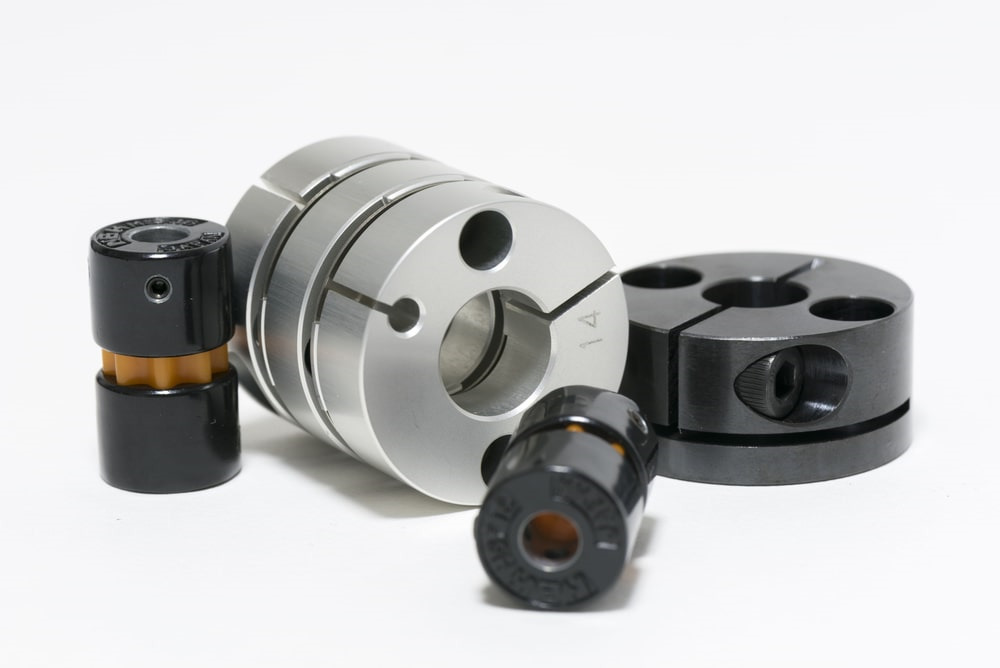About Shaft Couplings
A shaft coupling is a mechanical part 
Shaft couplings can be found in a tiny type mainly for FA (factory automation) and a big casting type used for huge power transmitting such as in wind and hydraulic electricity machinery.
In NBK, the former is named a coupling and the latter is named a shaft coupling. In this article, we will speak about the shaft coupling.
Why Do WE ARE IN NEED OF Shaft Couplings?
Even if the motor and workpiece are straight connected and correctly fixed, slight misalignment can occur over time because of alterations in temperature and improvements over an extended period of time, creating vibration and damage.
Shaft couplings serve when an important link to minimize impression and vibration, allowing simple rotation to become transmitted.
Flexible Flanged Shaft Couplings
Characteristics
These are the most famous flexible shaft couplings in Japan that comply with JIS B 1452-1991 “Flexible flanged shaft couplings”.
A simple structure made of a flange and coupling bolts. Easy to install.
The bushing between your flange and coupling bolts alleviates the effects of torque fluctuation and impacts during startup and shutdown.
The bushing could be replaced simply by removing the coupling bolt, enabling easy maintenance.
Permits lateral/angular misalignment, and reduces noises. Prevents the thrust load from simply being transmitted.
2 types can be found, a cast iron FCL type and a carbon metal?FCLS type Flexible Shaft Couplings
Shaft Coupling Considerations
In picking couplings a designer initially needs to consider motion control varieties or power transmission types. Most movement control applications transmit comparatively low torques. Power transmission couplings, in contrast, are created to carry modest to excessive torques. This decision will narrow coupling choice somewhat. Torque tranny along with optimum permissible parallel and angular misalignment ideals are the dominant considerations. The majority of couplings will publish these ideals and with them to refine the search should help to make deciding on a coupling style simpler. Maximum RPM is another vital attribute. Maximum axial misalignment could be a consideration as well. Zero backlash can be an important consideration where opinions is employed as in a action control system.
Some power transmission couplings are created to operate without lubricant, which may be an advantage where maintenance is a concern or difficult to perform. Lubricated couplings often require covers to keep carefully the grease in. Various couplings, including chain, gear, Oldham, etc., are available either because lubricated metal-on-metal kinds and as metallic and plastic hybrids where usually the coupling element is constructed of nylon or another plastic to get rid of the lubrication requirements. There exists a reduction in torque capability in these unlubricated varieties compared to the more conventional designs.
Important Attributes
Coupling Style
Most of the common styles have been described above.
Maximum RPM
The majority of couplings have a limit on the maximum rotational quickness. Couplings for high-rate turbines, compressors, boiler feed pumps, etc. generally require balanced models and/or balanced bolts/nuts allowing disassembly and reassembly without increasing vibration during operation. High-speed couplings may also exhibit windage effects within their guards, which can cause cooling concerns.
Max Transmitted Horsepower or Torque
Couplings tend to be rated by their optimum torque capability, a measurable quantity. Vitality is a function of torque occasions rpm, therefore when these ideals are stated it is usually at a specific rpm (5HP @ 100 rpm, for example). Torque values are the more commonly cited of both.
Max Angular Misalignment
One of the shaft misalignment types, angular misalignment capability is usually stated in degrees and represents the utmost angular offset the coupled shafts exhibit.
Max Parallel Misalignment
Parallel misalignment capacity is often given in linear models of inches or millimeters and represents the utmost parallel offset the coupled shafts exhibit.
Max Axial Motion
Sometimes called axial misalignment, this attribute specifies the utmost permissible growth between the coupled shafts, given generally in inches or millimeters, and can be caused by thermal effects.